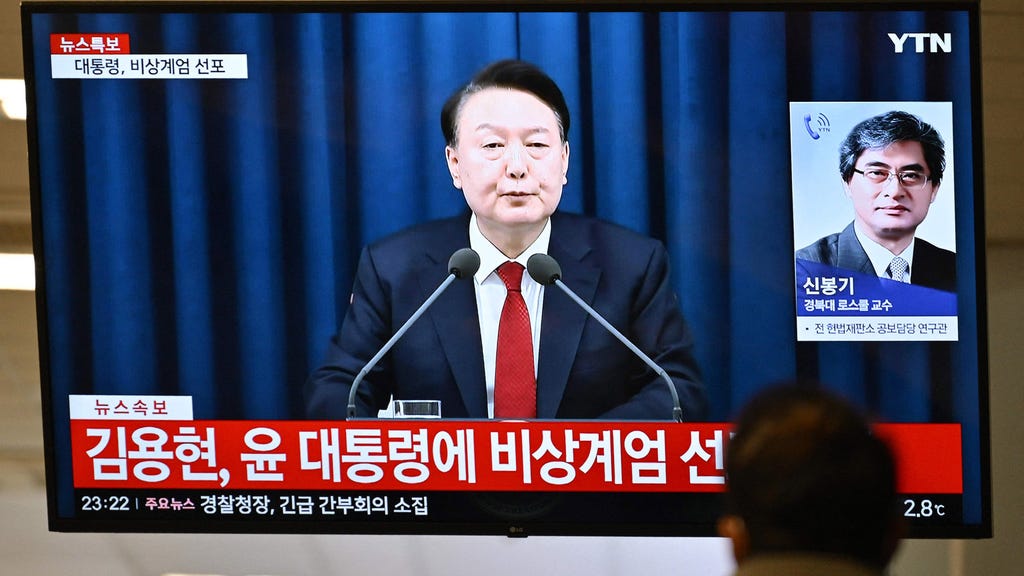South Korea experienced a brief but intense period of political uncertainty as President [President’s Name] declared martial law, only to rescind the order hours later. The initial declaration triggered immediate deployment of military personnel, including their presence at the National Assembly, raising concerns about a potential coup or significant political upheaval. However, the swift reversal suggests a rapid de-escalation of the situation, the reasons for which remain unclear. The incident underscores the volatility of South Korean politics and raises questions about the underlying factors that prompted such a dramatic, albeit short-lived, action. This summary will delve into the known details of the event, analyze the potential motivations behind the president’s actions, and explore the broader implications for South Korean democracy and stability.
The sequence of events began with an unexpected announcement from the president’s office declaring a state of martial law. The decree mobilized the military and granted them broad powers, effectively placing the country under military control. Reports emerged of troops being deployed to strategic locations, including the parliament building, signaling a serious escalation of the situation. The sudden move shocked the nation and sent ripples of concern through the international community. Speculation immediately arose about the president’s motivations, ranging from fears of an imminent coup attempt by opposing factions to concerns about widespread civil unrest. The absence of clear and consistent communication from the government fueled the uncertainty, allowing anxieties to fester.
However, within a matter of hours, the president’s office issued a second statement rescinding the martial law declaration. The military was ordered to stand down and return to their barracks, while the heightened security measures were lifted. This abrupt reversal left the nation bewildered, grappling with the implications of the dramatic, yet fleeting, military intervention. The government offered limited explanations for the initial declaration or its subsequent revocation, further deepening the mystery surrounding the incident. The lack of transparency and clear justification raised concerns about the president’s decision-making process and the potential for future unpredictable actions.
Several theories have emerged attempting to explain the president’s actions. Some analysts suggest that the declaration might have been a preemptive measure to quell potential unrest or an attempted power grab. Others speculate that the president was responding to a perceived threat, possibly from within the military or a rival political faction. The lack of official clarification allows for a wide range of interpretations, each with its own implications. One possibility is that the initial declaration was a miscalculation, a hasty reaction to incomplete or inaccurate intelligence. The subsequent revocation could then be viewed as a corrective measure taken once the full picture became clear. Another theory posits that the president faced internal pressure from hardline elements within the government or military, who advocated for a more forceful approach. The reversal might then suggest a successful pushback against this pressure by more moderate voices.
The incident, regardless of its underlying cause, has inevitably raised concerns about the stability of South Korean democracy. The ease with which martial law was declared and then rescinded highlights the potential vulnerabilities of the system. The lack of transparency surrounding the decision-making process and the absence of a clear public explanation further erode public trust in the government. Such incidents can create an atmosphere of uncertainty and instability, potentially emboldening anti-democratic forces and undermining faith in democratic institutions. It also underscores the importance of robust checks and balances within the government, mechanisms that ensure no single individual has the unchecked power to drastically alter the political landscape.
Moving forward, South Korea faces the challenge of restoring public confidence and addressing the underlying issues that led to this dramatic episode. A thorough investigation into the incident is crucial, not only to understand the motivations behind the president’s actions but also to identify any systemic weaknesses that need to be addressed. Open and honest communication from the government is essential to rebuild trust and reassure the public that such an event is unlikely to recur. The incident serves as a stark reminder of the fragility of democratic institutions and the importance of constant vigilance in safeguarding them. The long-term impact of this brief period of martial law remains to be seen, but it undoubtedly leaves a mark on South Korea’s political landscape, raising questions about the future direction of the country.














